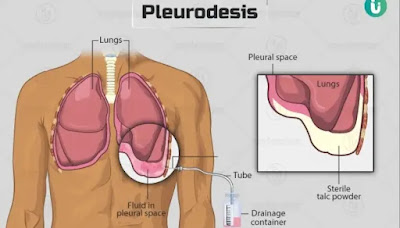Plexiform Neurofibromas Formation & Causes
Plexiform Neurofibroma: In this post we are going to give you an insight of Plexiform Neurofibromas. You will not only know about them but will also understand how they are form and the basic or root causes responsible for their formation.
What Are Plexiform Neurofibromas?
Plexiform neurofibromas are
categorized as tumors that basically grow along nerves.
And this is how they are called by
this name. If you look at the title Plexiform Neurofibromas, you will come
about the name 'neuro' which means nerves and 'fibroma' happens to be type of
tumor.
The peculiar thing about them is that
their growth involves nerve tissues along with many other different types of
cells. These are generally form either right under the skin or deep inside the
body.
Medically, Plexiform neurofibromas
are categorized as benign tumors having the capacity to take cancerous shape.
When they become cancerous, medical practitioners call them malignant
peripheral nerve sheath tumors (MPNST).
Here you need to acquire some
knowledge how they actually form so that you can better analyze them and give
crucial insights to your doctor.
Where Do Plexiform Neurofibromas Form?
Please note that Plexiform
Neurofibromas form or grow both inside or outside of the body including:
Belly
Chest or back
Legs and Arms
Neck
Face, often around the eye
In addition to this, these tumors can
also form inside the body or on body organs. Those places where Plexiform
Neurofibromas do not grow include the spinal cord and brain.
Please note that such tumors inside
the body are most commonly noted by undergoing some imaging tests. These tests
include magnetic resonance image (MRI) and others.
After plexiform tumors start growing
at any part of the body, they start making the nerve thicker. There are times
when certain clusters of them pop up along the nerve.
They also have the capacity to grow
on single nerve or on the bundles of nerves. They can also grow both on large
and small nerves as well.
In addition to this, Plexiform
neurofibromas are also known to weave themselves into normal tissues after they
grow to a certain area. And this makes them hard to remove even with surgeries.
Who Are Affected With Plexiform Neurofibromas?
You might be interested to know who
all are affected with them. Please note that Neurofibromas affect people having
neurofibromatosis type 1 (NF1) which is a condition causing tumors to grow
along with nerves.
In most cases, a change in a gene
causes changes in NF1. It's observed that around half of the time, a parent
passes that faulty gene to their child. While at other time, the gene change
continues to happen on its own and is not seen running in the family.
It's seen that a majority of time
when children having plexiform tumors are born with them. There are times when
such tumors don't cause any problem for several years.
Why Do They Grow So Large?
Plexiform neurofibroma tumors often
form early in life. In other words, they
are already there at the time of th birth. They first start out as a kind of
soft lump under the skin. Afterwards, the tumor itself grows longer as the age
advances.
And so, the tumor keeps growing as
the child becomes older. In most cases, they grow very slowly. If there is a
fast growth, it can be a sign that it has changed or transformed into cancer.
There are cases where it has seen
that plexiform neurofibromas become so large that they start pressing
underlying bones and even damage them including muscles, skin and organs.
The above damage can effectively
cause pain, trouble moving. high blood pressure, hearing loss and some other
symptoms.
It's seen that an injury sometimes
makes these tumors grow at a faster pace. It's seen that Plexiform neurofibroma
may suddenly swell up, especially if the injury specifically damages the blood
vessels surrounding the area.
What Do They Look and Feel Like?
Initially, Plexiform neurofibroma
look like normal lump or mass under the skin. Due to such a skin cover, it
gives a feeling of pressure. Also, the skin around them appears darker. The
lump also gets a feeling like a bundle of thick cords or knots.
It's also been noticed that Plexiform
neurofibromas comprise a type of cell that releases histamine. It's a chemical
found in the body responsible to cause itching.
It's the same chemical that causes
other problems att he time of an allergic reaction to pollen or any other allergens.
This is one reason why plexiform neurofibromas cause itching.
When plexiform neurofibromas grow
over the time, they may even hurt. It's because they tend to press the
adjoining muscles, bones and organs. They may also take the cancerous shape as
well.
The best way to deal with them is to get in touch with your doctor when you see such a kind of growth under the skin or after the arrival of any other symptom.
Also Read: Ohio Mesothelioma Lawyers, How to File A Claim?




Comments
Post a Comment